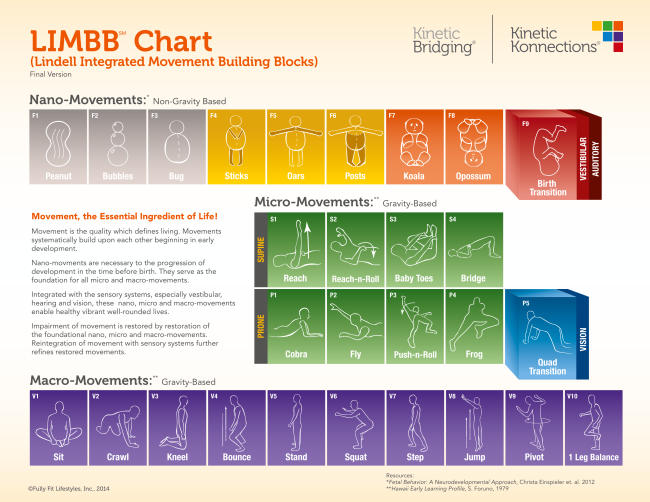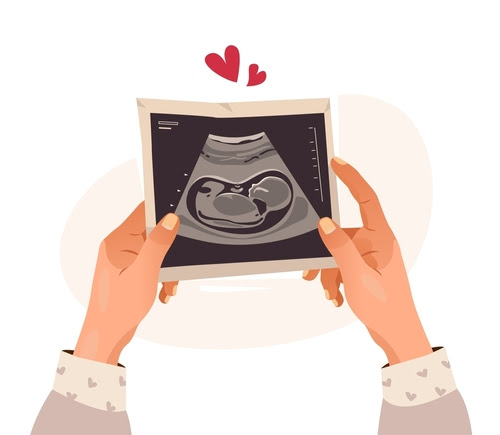Behind the Bridging Framework: Why is Early Development so Integral?
This week we want to share more about the components of the Bridging® process. Recent posts laid out the problem-solving process, the reset process, and what a session is like.
Another cornerstone of Bridging® is the early developmental framework used for both problem solving and the reset process.
Hint: The framework’s origins reside in fetal ultrasound observations!
Read on …
Bridging®: the foundational framework from babies
When you come in for help with pain or a movement challenge you may wonder “What are we looking at?” and “Why?”
Most fundamentally we are assessing micromovements of your core and limbs. How we assess is different than the chiro, PT, massage or acupuncture therapists. Instead of having you move, we are moving you. Why?
By us moving you passively, the underlying flow of your muscles is revealed. These relationships go back to the origins of how your body put itself together. They reveal how the muscles naturally work together without you thinking about it. In other words, it is the factory original layer, before the practiced layer.
 What are micromovements?
What are micromovements?
With the advent of 3D and 4D ultrasound technology it was possible for researchers to catalogue tiny movements observed at various stages of fetal development.
These stages of movement tell the story of how the cells and early structures of the body are organizing. After distilling the fetal movements down into discrete stages, Bridging® Founder, Cara Lindell, created the LIMBB (Lindell Integrated Movement Building Blocks) Chart. (Shown above.)
What do micromovements represent?
Functionally, each micromovement has a purpose and enables the next layer of complexity. It turns out that this organization is what all bodies need at every age in order to function well.
When we assess these organizational relationships, much is revealed about how the body is, or is not working, from a structural perspective.
The main concept is this — if your core muscle relationships have been altered by injury or surgery, your shoulder/arm and/or hip/leg relationships will be stressed. Resetting the core muscle issue often resolves a painful knee, hip, or shoulder.
Two reasons why micromovements are compromised
The easiest to comprehend is the injury, surgery, or illness that changed the muscle function.
More abstract is the possibility that the muscles never really worked together correctly in the first place (for a myriad of reasons!).
How do Bridging® muscle resets use the micromovement framework?
The hierarchy of the micromovements in the LIMBB chart becomes the blueprint for resetting the body’s muscles.
If you’ve had a session, or watched any of our YouTube sessions, we often begin with supporting and rocking the core to square up your core. Then limbs come into play.
The upside of taking this developmental approach?
The movements are self-reinforcing! This is why Bridging® has no homework in order to work.
After the basic relationships are in place we follow with essential transitions. How you roll, push-up, flex, and extend all are important to getting you fully back on track.
What you feel at the session end
Symmetry, flow, and control result from the process. Everyone is amazed at how gentle and subtle the process feels. And, you leave a session feeling calmer and moving better!
Of course, there is more detail to the framework we follow. That is part of what we teach in our Intro to Bridging® course.
If you want to learn more about the Bridging® Technique in order to help your patients or a loved one, the next dates are November 8th (virtual) and 9th (in-person). Want more info?
Insight of the week from Cara
Sometimes the best way to describe Bridging® is by example. Daniel, our video producer, is also a long time client. He sat down with me to reflect on how Bridging® has played a role in his life.
We first met when Daniel was 15. We’ve worked together for many years on and off to help on a variety of goals as his needs have changed.
The first appointment had multiple goals, depending upon the stakeholder. Mom’s reason for scheduling was to help Daniel re-group physically to support educational and social goals. Daniel just wanted his leg to feel better after the accident.
The car accident
Daniel’s memory of the first session was about getting help after being hit by a car. His left leg sustained an injury but wasn’t broken.
His favorite story about after the first session is how he went out to the parking lot and was able to run. His legs were able to pick themselves up in a way they never had before. Running was now possible. A huge improvement from his perspective.
Little did I know he had coordination challenges before and the mechanics of running never clicked. To hear him tell the story is so cool!
Next, the bike accident
A few years later Daniel, an avid cyclist, had an accident on his bike. Figuring out the physical movement disruptions from his accident and resetting the impacted muscle relationships helped Daniel be more active.
In a way, it was like taking out a magic eraser to clear up the layers of issues keeping his muscles from working easily together.
The way we use the LIMBB chart movements for injuries is to figure out which basic relationships are impaired, reset affected muscles, and then integrate the developmentally subsequent movements so overall function is well supported.
And his beginning was ‘interesting’ too
Over the years, posture and coordination have become important. His media business means he needs to be looking poised and confident, a contrast to his naturally tight, rounded shoulders.
Over the course of working with his shoulders, an earlier story from his mom took on new significance. Daniel was born with his hand positioned on his cheek. His hand had likely been there since mid-pregnancy, and the positioning impacted movement development which occurs until birth.
The deep layers of movement that were off-track in fetal development between his arm, chest, and head were on this side of his body. We went to work teaching these muscles ways of working which they seemed to have originally missed.
This exemplifies that by following each step of the LIMBB chart we can rebuild movement relationships, beginning with the simplest and progressing to the more complex.
There is more in the interview from Daniel’s perspective, and why Bridging® continues to be part of his life. Enjoy watching the interview!
For all ages and stages
The basic nature of the movements Bridging® restores holds true for all ages. It may look like we are doing something different when working with a 4 year old versus a 40 year old, but in reality, the reset progression is the same.
The main difference between age groups? Kids change faster. But kids need follow-up as they grow and as needs change, as you saw with Daniel.
Yes, you (or your child) can move with ease and confidence again!
Visit this page to schedule.

